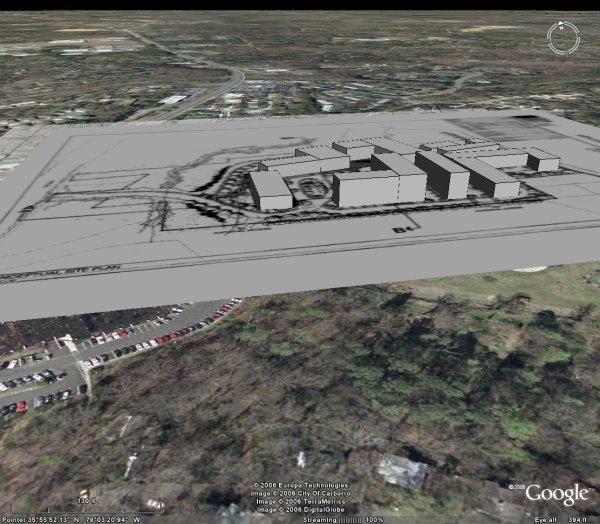Or are we waiting on the real battles to begin? This election season I have two goals: to squash the mediocre Orange County districting referendum and to get Judge Baddour elected.
Here’s my latest Chapel Hill News column “Election referendum doesn’t fly”:
How much does it cost to unload a real turkey? This month, our county commissioners are struggling with that question as they try to sell their foul bird of representational reform to local voters.
Reform? Over the last few months, with little public involvement, they have cobbled together an ill-tasting electoral melange — two geographical districts, two distinct primaries, district and at-large seats — that owes more to satisfying short-term political goals than to promoting democratic ideals.
Not a surprising outcome given the coercive genesis of the reform project.
In a March 29 guest column in The Chapel Hill Herald, ironically headlined “Give voters the power of choice,” state Rep. Bill Faison wrote how proposed legislation would carve our county into new electoral districts that would recognize the ” the distinct diversity of our county” and “provide for district representation to reflect that diversity.”
Yet, rather than strengthening our community’s bonds, Faison’s bill promoted a brittle, mediocre, contentious reapportionment scheme codifying one of the worst of political practices, divisiveness.
By favoring a small constituency unhappy with its current rural representatives, County Commissioners Stephen Halkiotis and Barry Jacobs, Faison’s plan invited disenfranchisement of other geographically, economically and socially distinct voting blocks.
Fortunately, because of state Rep. Joe Hackney’s command of the legislative process, Faison’s attempt to weaken one person/one vote died, though the impetus to continue with some type of representational reform remained.
Yes, some inequity exists under the current system, but the measure now before voters on the November ballot is no remedy.
Possibly lulled by spring’s promise of renewal, I asked the Board of Commissioners March 21 to accelerate the roll out of super precincts, to listen to Faison’s call to broaden their membership to seven and to make two major changes in our current voting process: non-partisan elections and cumulative or proportional voting.
I frequently help Orange County Democrats with their get- out-the-vote drives, usually support their candidates and am generally sympathetic to their goals. I’m not troubled by the board’s current political composition.
I am against rigging the game so that near perpetual control rests in their party’s hands.
Have you noticed how quiet the commissioners race is? This time last year, during my non-partisan run for Town Council, I was incredibly busy getting my policy message out through forums, neighborhood meetings, personal outreach and media events.
Considering the county commissioners’ taxing authority, responsibility for schools and other duties, you would think the race for the Board of Commissioners would raise twice the hullabaloo of a simple municipal race.
Yet, nothing. Political calm. Why?
Of the currently 88,944 registered voters, 47,152 Democrats and 19,629 Republicans can nominate candidates, hold primaries, turn out a small percentage of party loyalists and, in this strongly Democratic county, fill the seats.
May’s primaries are a Democratic “fait accompli.” Some 22,163 citizens, Independents, are limited to participating from the sidelines.
That’s not healthy for our local democracy.
Non-partisan elections would solve at least three of our electoral problems: ease independent candidacies, reduce the chance a party will “game” the system early in the cycle and force candidates to reach out to a broader spectrum of voters (and maybe work a bit harder for their votes).
Unlike the current “winner-take-all” system, where numerically disadvantaged voting blocks cannot influence outcomes, proportional voting systems amplify minority input — but only if disparate groups truly collaborate.
Simply, united we stand, united we win.
The cumulative system, a system suggested by a 1993 Orange County advisory group to redress voting disparities, gives each voter as many votes as there are seats. Four seats up for grabs? Cast all four votes for one candidate or cast one vote for each.
The strength of this system lies in collaboration. For example, a natural coalition, based on a common interest in sustainable agricultural policy, could be built between feared southern Carrboro liberal elites and supposedly conservative northern Orange County farmers. Each group could cast two of its four votes for the candidate most supportive of their single-issue goal. Their remaining two votes could be cast quite differently.
United they stand, united they win.
Faison, absent adequate study or effort to legislate, said proportional representation was “not viable in any way.” I disagree.
What is not equitable, not acceptable and definitely not viable is November’s representation reform referendum.



